One of my favorite aspects of designing a terrarium is the hardscape.
The combination of selection and placement is key in bringing a dynamic scene to life, and when it comes to organic hardscape – nothing does that better than Spider Wood.
Honestly, Spider Wood (Spiderwood) is to hardscapes what butter is to bread.
(Because, you know, sliced bread is great, but buttered bread is the real MVP).
Spider Wood has curling, gnarly branches that form a vibrant, organic depth within a terrarium or aquarium.
In this article, I will get to the root of Spider Wood, put my twist on how to use it, and show you where to get your own.
Without further ado, let’s begin!

Terrarium Tribe is reader-supported. When you purchase through links on our site, we may earn an affiliate commission (at no further cost to you). 💜
What is Spider Wood?
Spider Wood falls into the category of driftwood – an ever-popular group of hardscape materials.
You can describe driftwood as a general term for wood washed ashore onto beaches, coasts, or riversides.
Though Spider Wood specifically originates from the root systems of the shrubby Rhododendron genus.
Known by various common names such as redmoor root and azalea root, Spider Wood takes its name from its own famously gnarling, spiraling branches that supposedly resemble a dead spider.
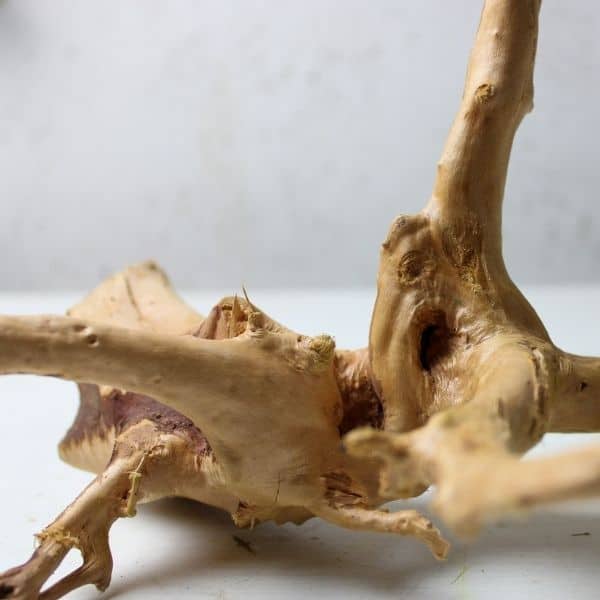
I’m not quite sure I see the resemblance, but it sounds pretty cool. I suppose Dragon Stone doesn’t look like dragon scales…but it’s still a cool moniker.
The different species of the shrub-like Rhododendron genus offer a variety of sizes, shapes, and even colors, with hues ranging from brown and reddish to a light tan.
Why is Spider Wood Popular?
Among the different driftwoods, Spider Wood is easily one of the most sought-after. Its versatility gives it an allure among terrarium and aquarium hobbyists alike.
Let’s take a quick look at just why it is so popular.
1. It’s Lightweight
First and foremost, Spider Wood is easy to handle.
Spider Wood is a softwood, meaning it is easier to clean and much easier to implement within terrariums than harder, heavier woods. The latter may risk damage to your glassware.
Additionally, many of the smaller branches are easy to break apart, giving you an added level of control when shaping your hardscape.
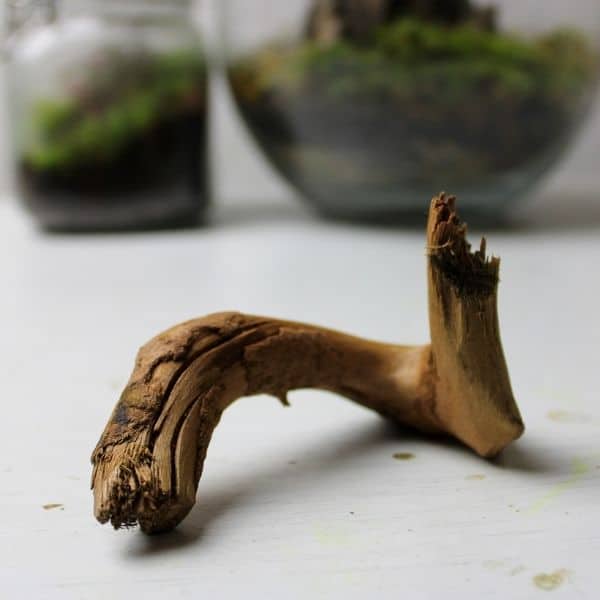
2. Aesthetic Power
Visually, Spider Wood is stunning.
With each piece being unique and malleable, you can use the wood to create an array of different effects.
Spider Wood is often used in large background pieces that create three-dimensional depth or as curling vines that ‘connect’ your hardscape together like branches.
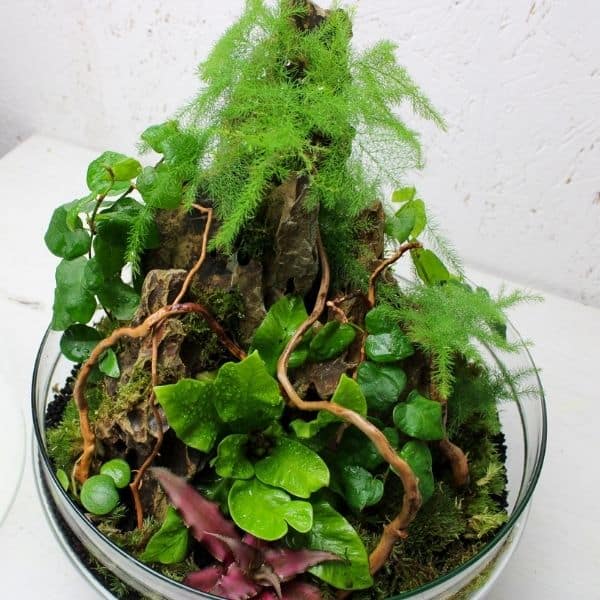
Let’s jump back on that loose butter analogy I made in the intro.
Like butter to bread, Spider Wood can take your terrarium design from something dry and straightforward to something more well-balanced and flavorful.
Ready to get some of that flavor for your own terrarium project?
3. It Has a Low PH Impact
This one is more for the aqua-enthusiasts out there.
Spider Wood can slightly lower PH and release some tannins, but it’s generally low-risk as an addition to your aquascape.
Conversely, Spider Wood can cause aquarium hobbyists some strife, for it is a notoriously buoyant wood – making it a real struggle to sink.
4. It Plays a Part Within the Ecosystem
Though more resilient than most softwoods, Spider Wood is prone to rotting over time.
While this can be taken as a disadvantage, one can also consider this a benefit within a bioactive terrarium.
Decaying organic matter can serve as a nutritional source for microfauna, which encourages further bioactivity within your ecosystem.
Taking it even further, within vivarium, aquarium and paludarium setups: Spider Wood can create excellent hiding places for your creatures. The many winding roots simulate a complex den in which they can eat, breed, and sleep.
How to Use Prepare Spider Wood
How does one use Spider Wood effectively?
It is not quite as simple as just shoving the wood atop your substrate and hoping for the best.
Unlike stone, Spider Wood is an organic material, which makes it particularly susceptible to mold within a terrarium setup.
In fact, I guarantee you that your wood will grow mold if you don’t prepare it properly. So listen up!
As it’s my specialty, I will focus more on terrariums. But most of these principles can be extrapolated to any of the ‘arium’ hobbies.
The aim is to remove harmful bacteria, pests, and spores. We want the cleanest wood possible.
It’s difficult to guarantee a completely sterile and mold-immune result, but there are a few crucial steps to take.
Terrarium Prep
Choose Your Supplier Wisely
It’s as important to select a reputable supplier for your hardscape elements as it is for your plants or animals. If it is an organic material, there is always room for mistreatment.
Spider Wood could be treated with harmful chemicals or toxins which may damage your ecosystem.
Or it may be treated with nothing and house unwanted eggs or bacteria that will cause you confoundment in the future.
Find a popular specialist, and you shouldn’t run into too many issues.
Clean the Wood
Even if you have purchased from a reputable supplier, you must do a little leg work, too.
There are two major steps to cleaning your Spider Wood: brushing and boiling.
To remove excess dust and grit, first, take a brush to your pieces and get rid of the gristle that could dust up your biome.
Second, if you have a pot big enough, I recommend boiling your wood for anywhere between 15-30 minutes.
The wood must be fully submerged but not boiled to the point that it begins to break down.
Boiling is the most failsafe route to take. You could consider bathing your wood in a hydrogen peroxide solution, but, to be honest, that’s a little extra.
Quick Tips
- Consider adding springtails into your terrarium early on. They will help maintain a healthy ecosystem and consume any mold that develops. You can grab a culture here.
- I have sometimes varnished my prepared spiderwood as an added protection against fungal development.
Aquarium/Paludarium Prep
One of the more common issues cited with Spider Wood is its buoyancy.
To ensure your sticks sink, you will need to pre-soak your wood.
This could take a very long time (weeks, even!).
A quick pro-tip, however, is to warm your water. The warmer the water, the less time is taken.
Use a rock to weigh down your wood until it sinks.
Alternatively, you could attach the wood to something heavier that will sink regardless (e.g. aquascaping rock).
This can be achieved via an aquarium-safe adhesive or by pinching the wood in between the rock(s).
How to Use Spider Wood
The best thing about a good hardscape is that the right pieces can do so much of the design work for you.
Spider Wood is no exception.
Once prepared, you are free to use the wood in a multitude of ways.
As a Background Element
Spider Wood arguably thrives most as a large background apparatus that vertically elevates floral composition.
Within terrariums or aquariums, you can take a large piece of Spider Wood and place it at the rear of your design and allow it to branch outwards from the corner of your ecosystem.
You can easily pair Spider Wood with other hardscape elements such as stone or other driftwoods to affect a denser image.
(Check out the guides to terrarium rocks and terrarium driftwood for more amazing materials).
Finally, do not forget you can break apart and reconstruct Spider Wood to suit your vision. Wonderful sculptures, arches, trees, and bridges can be formed this way.
It does take a little patience and ingenuity, though.
As always, don’t be afraid to experiment and play around with ideas before you begin making.
As a Highlight
I often find myself using broken branches of Spider Wood as highlights, wrapping around a larger stone-based hardscape.
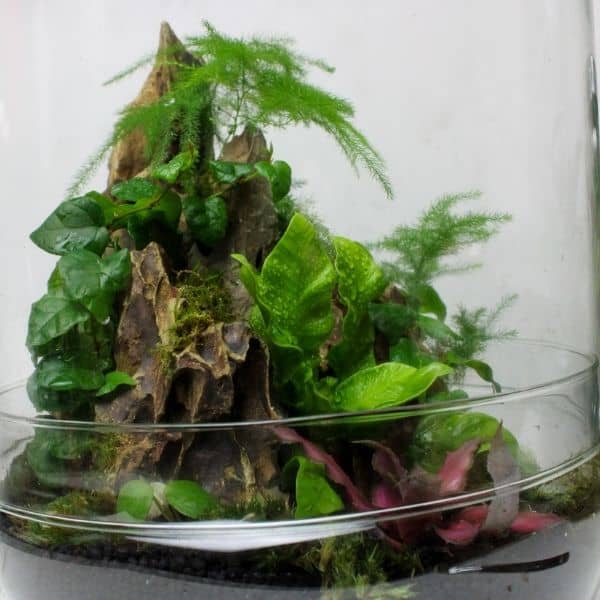
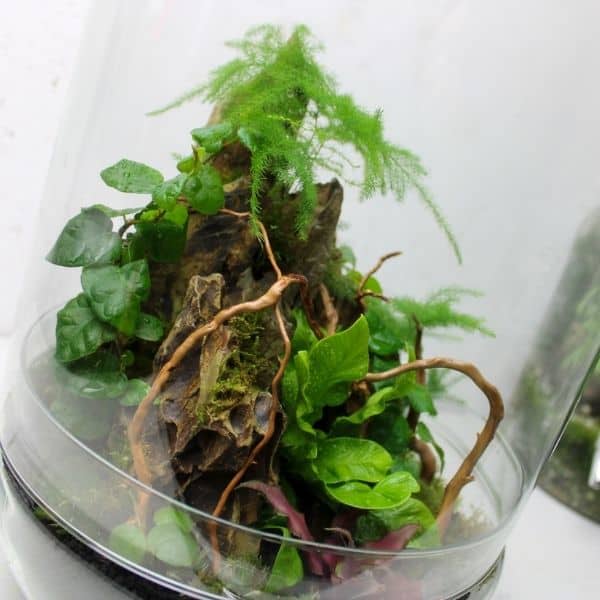
In the two pictures above, you can see how I have created a mountainous central piece using Dragon Stone.
Though, in the second image, Spider Wood has entered the fray.
It creates such a jungle-y (jungular?) atmosphere and in my opinion, ties the design together.
To learn how to create these mountainous columns for yourself, check out this Dragon Stone guide.
Other Uses
I will say that although we’ve talked about Spider Wood in its capacity to enhance a terrarium or aquarium design, that’s hardly the limit of its creative potential.
Moss wall art has and is becoming increasingly popular among individuals and businesses that want to bring a little life to their walls without arduous maintenance.
I have found Spider Wood again gives a design an edge that cannot be achieved with any other material. The winding, reddish roots can make a picture sing.
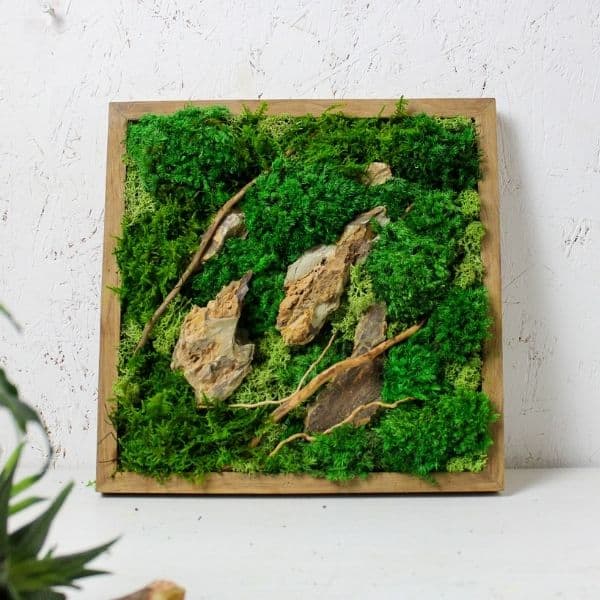
Over to You
Spider Wood is ultimately a fantastic addition to a terrarium or aquarium.
The colors, the gnarly-ness, the versatility – it has it all
Your main challenges are likely to be mold and/or sinking the wood in an aquarium, but today, I’ve given you the tools to overcome these issues and get started with your new favorite material.
Do you prefer to use wood or stone within your setups, and why? I would love to know. Let me know below!

If Spiderwood truly comes from an azalea bush or rhododendron bush, then I have two very useless and 98% of the time very ugly bushes that were planted in the bed at the front of my house, before we bought the place. I’ve always hated them, and threatened to dig them up and throw them away. Seems now I have a very good excuse, other then hateing them, to dig them up! Yay! Thank you for the article. Very enlightening!